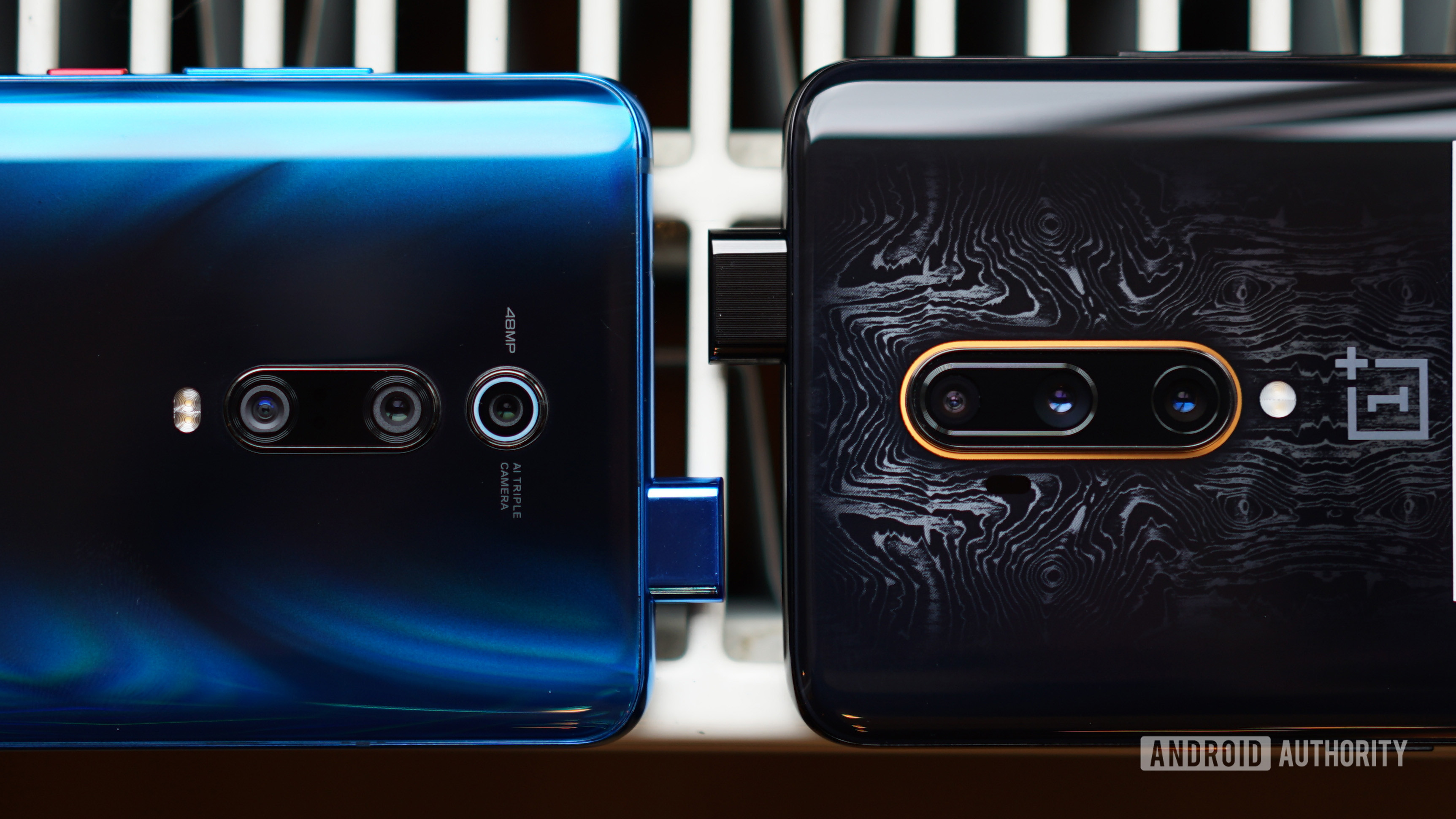The OnePlus 8 Pro packs in plenty of new hardware to justify the company’s highest-ever smartphone price tag (McLaren editions not considered). One particularly intriguing feature on the menu is the handset’s dedicated color filter camera. We certainly don’t see this type of camera too often.
This is the fourth camera on the back of the OnePlus 8 Pro, but it occupies the bottom slot in the main triple camera housing. What’s particularly interesting about this camera is that, rather than including a macro or time-of-flight sensor, OnePlus has opted for a very specific effect over more universal flexibility. The company says the color filter camera will help your photos “stand out from the crowd” thanks to “artistic lighting effects and filters”. Let’s dive in.
How the OnePlus 8 Pro’s color filter camera works
The setting to use the dedicated color filter camera is tucked away in the app under the color filters button. I’m not sure this is the best way to access the camera, as it’s a little out of the way and doesn’t highlight the feature even when you go into the setting. There are a few familiar options here, including vivid colors and a black-and-white filter. But the unique option enabled on the OnePlus 8 Pro is called Photochrom.
Traditionally, photochrom is the process of producing colorized images from black-and-white negatives. The OnePlus 8 Pro’s camera seems to take inspiration from this process, but sticks to a mostly grayscale color palette. We asked OnePlus for a bit more information on the color camera. Here’s the response:
Inspired by the unique color tones used by professional photographers, OnePlus innovatively uses a filter lens on the fourth camera, which processes light differently to generate a surreal image with a unique color tone.
The customized filter transforms the light passing through to an unusual and unique spectrum for the sensor to collect. And the data collected is then processed to generate images that appear rather surreal.
Not a lot of help there, other than that the camera lens acts as a type of light filter, altering the spectrum that reaches the camera sensor. The evidence seems to suggest this is a type of photochromic lens that blocks or attenuates certain frequencies of light, producing a more black-and-white effect with limited colors. It’s not quite a monochrome sensor, but somewhere between that and a traditional full-color camera sensor.
Color camera in action
The best way to understand the color filter camera is to take a look at it in action. It’s clearly not just a basic color filter, as the way materials reflect light also alters the output. You can see this effect quite clearly in the camera lens example below, and different clothing fabrics of the same color produce similar results. Although, even after some serious experimentation, it’s not intuitive as to how any scene looks until you actually enable the color filter viewfinder.
Generally speaking, most pictures come out in a combination of grey and copper hues. The results range from pretty unique, to rather simple-looking greyscales and negatives. Personally, I found it quite tricky to figure out which subjects would be given an interesting twist. Most of my results ended up looking pretty similar and, frankly, a little dull.
Experimental photographers may get more mileage out of this camera than most, but they’re probably already used to editing their own pictures anyway. While not easy to replicate with basic photo editing apps, an experienced Photoshop user could probably whip up something very similar to, or better than, most of my results. I also wonder if a clever machine-learning algorithm could produce something very similar in software.
Given that the color filter camera provides such a limited range of looks, I’m curious as to why OnePlus went through all the trouble of using dedicated hardware for the effect.
Novel feature or useless gimmick?

The results from the OnePlus 8 Pro color filter camera can certainly look striking. The 5MP resolution is good enough for a quick share to social, but it’s far too limited for cropping and editing. Worse still, the camera performs very poorly in low light, with grain and noise that saps the image of essential detail. Even in good lighting, trees and textured images look harsh and subjects are often out of focus. The color filter sensor is really quite poor by all traditional photography standards.
This is a toy you’ll probably use once or twice and then forget all about.
In previous years, OnePlus refused to splash the cash on an official IP certification to save costs, and justified the loss of the headphone jack due to limited space. Yet the OnePlus 8 Pro features this dedicated filter camera which serves an unbelievably niche use case. Talk about confused priorities.
Few would have complained if the OnePlus 8 Pro stuck with a more familiar triple camera setup. In fact, I would have been happy to shave even a seemingly small sum like $25 or less off the price tag, rather than be lumped with a camera I’ll rarely use. Experimenting with camera colors is a neat concept but the execution isn’t anywhere near a flagship worthy feature.
Read next: The OnePlus 8 Pro is the best display we’ve ever tested
Even if you like the look of this dedicated camera enough to justify its existence, the feature is tucked away as if it was just another software filter. It’s hard not to feel that this fourth camera was slapped on the back just to give the 8 Pro something, anything new over the OnePlus 7T Pro. Ultimately, the color filter camera is a toy you may use once or twice and then forget all about. Little more than a gimmick.
Killer flagship
Snapdragon 865 on the cheap

Loading poll
More posts about OnePlus 8 Pro






















